TOGAF® Enterprise Architecture Foundation & Practitioner Training Course
Learn from the Best, Learn from TopD
Features of This Course
Why ChooseTOGAF® Enterprise Architecture Foundation & Practitioner Training?
TOGAF certifications can help enterprise architects unlock lucrative opportunities across the world.
Used globally by leading organizations to maximize efficiency, the TOGAF standard enables practitioners to design, evaluate and build the right IT architectures.
This TOGAF Enterprise Architecture Foundation and Practitioner online training course offers professionals a comprehensive guide to the TOGAF framework.
The TOGAF Enterprise Architecture Foundation course provides introduction to the TOGAF Enterprise Architecture methodology and framework.
This TOGAF Enterprise Architecture Practitioner online training course validates a person’s knowledge, comprehension, and ability to apply the TOGAF Standard, 10th Edition.
After completing both levels, the learner will be confident in developing, sustaining, and using an Enterprise Architecture.
Increase your visibility and status within the architecture community with this interactive, self-paced online training course.
Broker Statement
- TOGAF®️ EA Foundation and Practitioner delivered by Good e-Learning is a course accredited by The Open Group.
- TopD Learning promotes this course for Good e-Learning.
More about the course
This TOGAF Enterprise Architecture Foundation course explores the core concepts and principles of the TOGAF standard, diving deep into the phases of the Architecture Development Method (ADM) which sits at the heart of the framework. Any individual or organization with an aspiration to implement industry-leading Enterprise Architecture practices should have a solid understanding of the TOGAF standard.
The TOGAF Enterprise Architecture Practitioner course explores the core concepts and principles of the TOGAF standard in detail. It also provides practitioners the opportunity to apply TOGAF concepts to a range of Architecture problems.
This fully-accredited online course offers a range of self-paced micro-learning videos, formative quizzes and applied practice.
The practice exams and other training resources are designed to ensure learners pass the TOGAF Enterprise Architecture Practitioner exam on their first attempt – and feel confident in the practical application of their new knowledge.
Benefits for Individuals
Becoming TOGAF-certified gives Enterprise Architecture professionals, and those working closely with architecture teams, the opportunity to demonstrate their knowledge and proficiency in the framework. Our TOGAF Enterprise Architecture Foundation course also equips learners with important, transferable skills, including:
- A common language in which to collaborate with other TOGAF architects
- The capabilities to meet an organization’s architectural requirements more fully
- Process optimization skills, to ensure all departments work efficiently
- Being able to identify cost-saving opportunities
- Leadership competencies
All of this can do wonders for career development, enabling you to increase your earning potential.
Benefits for Organizations
A well-defined IT architecture leads to a much more efficient IT operation, providing better returns on existing investments while also reducing risks for future programs.
Adopting a world-class Enterprise Architecture standard like TOGAF will also enable much greater consistency and discipline. It improves interoperability and customer-specific usability, reducing waste and costs.
The framework integrates business objectives and adapts enterprise-specific operations, reducing complexity and providing better communication channels between internal and external stakeholders.
Training your staff in the latest version of the TOGAF standard, the TOGAF Standard 10th edition, will simplify and speed up the architecture development process in your organization. This will help you to reduce expenditure for planning, design and implementation.
Start Learning & Growing Your Skills Today!
Join 5,000+ successful students in a journey called growth. Let’s Talk 🙂
Instructor LED Live Session
Self Paced Learning
One to One Training
Course Curriculum
Module zero introduces you to the course main features, learning plan, aims and objectives, and structure.
It also offers a course guide, diagram packs, a further reading and links document and links to download essential copies of the framework publications.
Module one answers several fundamental questions, such as “What is an enterprise?”, “Why is an Enterprise Architecture needed?” and “Why use the TOGAF Standard as a framework for Enterprise Architecture?”
The module also introduces the core concepts of the TOGAF Standard, including an initial outline of the Architecture Development Method (ADM), the Enterprise Continuum, Architecture Repository, Content Framework, Enterprise Metamodel and Enterprise Capability.
Module two explains the basic structure of the ADM and explores the governance and scoping of Enterprise Architecture.
Module 3 outlines the purpose and objectives of each of the phases of the ADM: the Preliminary Phase and Phases A-H. It also explains Requirements Management and architecture in an Agile Enterprise.
Module 4 introduces the ADM supporting guidelines and techniques. It outlines the purpose of Architecture Principles and what makes a good Architecture Principle. It goes on to explain business scenarios, interoperability, the Business Transformation Readiness Assessment and risk management.
Module 5 explains where to find detailed guidance on applying the TOGAF Standard, how to apply iteration to the ADM, the Architecture Landscape, Architecture Partitioning and the purposes of EA Capability.
The module concludes with an explanation of how the TOGAF Standard supports the digital enterprise.
Module 6 explains the concept of Architecture Governance, focusing first on its nature and characteristics. It then describes the role and responsibilities of an Architecture Board along with the role of Architecture Contracts and Architecture Compliance.
Module 7 focuses on Architecture content — the outputs produced while executing the ADM. It begins by defining key concepts of Architectural Artifacts, what building blocks are and their use in the ADM. It then describes the TOGAF Standard deliverables created and consumed in different ADM phases.
There are two practice exams. One has been provided by The Open Group. The other has been created by us.
Module 9 provides information on booking the exam and other courses of interest.
Welcome to TOGAF Enterprise Architecture: Practitioner
Module 0 introduces you to the main features of the course, including:
- learning plan
- aims and objectives
- structure.
This course provides a course guide, diagram packs, and further reading and links documents. Additionally, there are links to download essential framework publications.
Module 1 defines what Enterprise Architecture is and looks at Architecture Governance and Architecture Security. The module includes a scenario, where individuals can demonstrate application of their knowledge.
Module 2 looks at how Agile development and digital business is managed in TOGAF and iteration in the TOGAF method. The module includes a scenario, where individuals can demonstrate application of their knowledge.
Module 3 looks at Phase A of the ADM and how stakeholders are managed during Architecture work. It explores key aspects of phase A, Architecture views and viewpoints and alternatives and trade-offs. The module includes a scenario, where individuals can demonstrate application of their knowledge.
Module 4 explores Phases B, C and D of the ADM. It looks at the inputs, outputs, steps and approach for each phase. It also explores security concerns related to each phase. The module includes a scenario, where individuals can demonstrate application of their knowledge.
Module 5 explores Phases E, F and G of the ADM. It looks at the inputs, outputs, steps and approach for each phase. It also explores security concerns related to each phase. The module includes a scenario, where individuals can demonstrate application of their knowledge.
Module 6 looks at how Change is Managed in Phase H of the ADM. It also covers how requirements are managed throughout the ADM in the Requirements Management Phase. The module includes a scenario, where individuals can demonstrate application of their knowledge.
Module 7 looks at key concepts that support the ADM. These include Business Scenarios, Migration Planning Techniques, Compliance reviews and the Architecture Landscape.
Module 8 explores the Architecture Repository and the Enterprise Metamodel, which is used to organize Architecture content. The module includes a scenario, where individuals can demonstrate application of their knowledge.
Module 9 contains a series of exam preparation exercises based on real-world scenarios and a timed practice exam.
Module 10 provides information on booking the exam and other courses of interest.
TOGAF Enterprise Architecture Foundation
- Demonstrate sufficient understanding of the framework
- Multiple-choice
- 40 questions
- 60 minutes (additional time available if English is not your first language)
- Pass mark is 60% or 24/40
- Closed-book
TOGAF Enterprise Architecture Practitioner
- This is a multiple-choice exam
- There are 8 scenario-based questions in total
- Each question is worth between 0 and 5 marks
- Candidates have 90 minutes to complete the exam
- The exam is open book, so you can use certain resources or materials during the exam
- The pass mark is 60%. You must score at least 24 out of a total of 40 points to pass
- 6 months’ access from the date of purchase to complete your training
- 10+ hours of online training content
- Free exam voucher
- 2 practice exams
- Tutor support
Frequently Asked Questions
FAQs
The TOGAF standard is a globally-recognized architecture framework. It is a valuable tool that enables the design, evaluation and building of the right IT architecture in an organization. It forms the cornerstone of Enterprise Architecture initiatives in many organizations.
The TOGAF standard is owned and developed by the members of The Open Group, a body consisting of many of the world’s Fortune 1000 companies as well as many major IT vendors.
Yes, the TOGAF 9 Foundation certification course has been accredited by The Open Group.
There are no formal prerequisites for this course.
The seat time of the course is 10 hours. This includes all the learning modules, revision modules, the downloadable PDF workbook, module-level assessments and the mock exams.
Learners receive 6 months of access from the purchase date of the course.
The exam voucher is valid for 12 months.
Pearson Vue is an authorized provider of the TOGAF 9 Foundation examination.
The course does not require a manual.
Broker Statement
- TOGAF®️ EA Foundation and Practitioner delivered by Good e-Learning is a course accredited by The Open Group.
- TopD Learning promotes this course for Good e-Learning.


